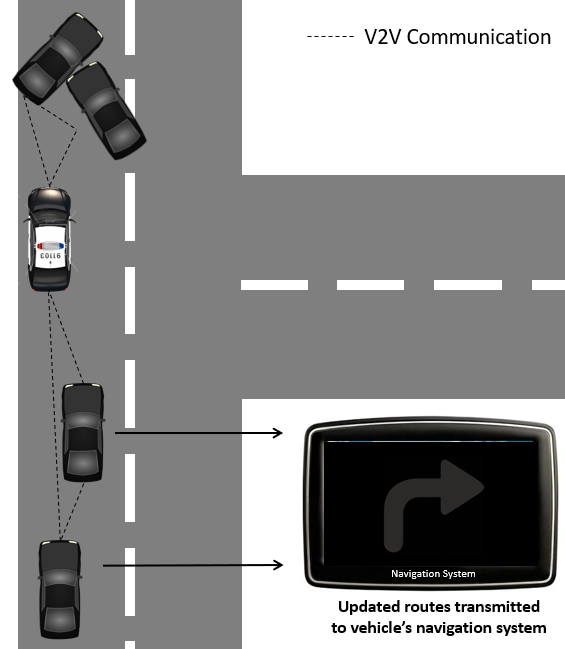3.3.4 ITS and fleet management
Course subject(s)
Module 3. City logistics solutions
What are Intelligent Transportation Systems (ITS) and why are they useful?
Intelligent Transportation Systems (ITS) are “the application of advanced sensor, computer, electronics, and communication technologies and management strategies in an integrated manner to improve the safety and efficiency of the surface transportation system” with the aim “to solve the most common challenges related to recent transportation systems such as heavy traffic congestion in large cities, poor traffic management, unreliable services” among many others.
Part of function of the ITS in a city is to collect data on the traffic situation, which can come from a variety of sources, such as traffic sensors or from vehicles using dedicated short-range communication technology. This can, for instance, enable vehicle drivers to be aware of disruptions on the road and respond accordingly, potentially saving a lot of time caught in congestion (see Figure 1).

Figure 1 Illustration of Vehicle-to-Vehicle communication application
Enhanced fleet management with ITS
Logistics service providers normally own multiple vehicles to provide their services. In order to coordinate their fleet, a fleet management system is needed. Such system allows logistics service providers to operate more efficiently, a key factor of success in the logistics industry.
The planning of the vehicle’s route and schedule may operate at a higher precision, and with greater flexibility and efficiency, when information collected by the city’s ITS is shared with the fleet management systems. Without the integration, current fleet management system can track the real-time location and collect various other diagnostic data of the vehicles in its fleet, with the vehicle’s in-vehicle unit. One application of the enhancing this fleet management system is to enable re-routing to avoid disruptions in the network (as in the previous example). If this vehicle cannot be re-routed, you could also increase the precision of the estimation of arrival time at the customer’s location. Another application, which exists but is not as widespread is the booking of parking locations (similar to the loading dock booking system) to ensure availability when you arrive.
__________
Paul, A., Chilamkurti, N., Daniel, A., & Rho, S. (2017). Intelligent transportation systems. In Intelligent Vehicular Networks and Communications (pp. 21–41). Elsevier. https://doi.org/10.1016/B978-0-12-809266-8.00002-8
Dejax, P. J., & Crainic, T. G. (1987). Survey paper—a review of empty flows and fleet management models in freight transportation. Transportation science, 21(4), 227-248.
Thong, S. T. S., Han, C. T., & Rahman, T. A. (2007, June). Intelligent fleet management system with concurrent GPS & GSM real-time positioning technology. In Telecommunications, 2007. ITST’07. 7th International Conference on ITS (pp. 1-6). IEEE.
Oskarbski, J., & Kaszubowski, D. (2016). Potential for ITS/ICT Solutions in Urban Freight Management. Transportation Research Procedia, 16, 433-448.

Sustainable Urban Freight Transport: a Global Perspecitive by TU Delft OpenCourseWare is licensed under a Creative Commons Attribution-NonCommercial-ShareAlike 4.0 International License.
Based on a work at https://ocw.tudelft.nl/courses/sustainable-urban-freight-transport-global-perspective/.



